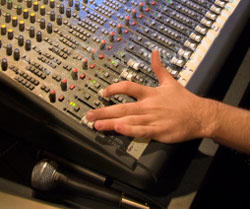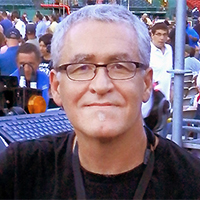It’s typical to find articles suggesting preparations for many of the elements outside the mixing console prior to worship. After all, we know those things can help ensure an efficient and confident atmosphere during your setup and rehearsals.
However, I wanted to tunnel down a bit further and deal specifically with configuring your mixing console to put you in the best position possible to mix the event and generally make it easier to be a little “quicker on your feet.”
There are few tried and true methods for really helping yourself out in a live setting, where things can change at the drop of a hat and leave you scrambling to recover.
One of the stresses that comes with any suddenly changing situation is the ability to think clearly and logically while you’re scrambling to recover.
Certainly one of the most basic methods for combating the confusion factor is to layout your inputs and outputs on your console in a logical and effective manner.
The first thing I’m going to suggest is, on the surface, very simple, but may require a little thought and creative patching on your part to implement.
In my opinion, this is a very important method to grasp – especially if you’re contemplating moving to a digital console where an input can be plugged in, and then show up, on any fader you desire by using the digital patch bay.
In fact, in some cases with digital, the fader’s name, source, or even position on the console can change during a scene recall.
Layout Logic
So with that in mind, I make every attempt to layout my console inputs just as I see them on the stage.
Here are some examples: When I layout my drum kit it will usually go something like this-kick, snare, floor 2, floor 1, rack 1, ride cymbal, overhead left, overhead right, hi hat. This makes tracking down things like a given tom or an overhead channel easy because you can correlate them to what you actually see when you look up at the stage.
It also makes any panning very intuitive. For example, the left-most tom fader would be panned the most left, the right-most tom panned the most right. All cymbal inputs reside next to each other, and you can easily see the relative panning and fader levels of the cymbal mix.
This concept is especially helpful with a lot of players and a lot of instruments on stage, such as a number of vocalists.
Let’s say I have a main vocalist stage center, but I also have four vocalists to either side of the singer It’s well worth the trouble to lay out these inputs to reflect their placement on stage. So, from my perspective, the inputs would layout BV 1, BV 2, lead vocal, BV 3, BV 4.
Also, in this case, I might even try to give myself some hints at what kind of parts the vocalist are responsible for-bass, bass, lead, tenor, soprano. The idea is to allow you to attack these inputs quickly when needed, without having to search for them, especially for console setups with a large number of inputs.
The same principle applies for keyboards, horns, and guitars, especially when there is more than one player involved.
Lay them out on your console in a way that is coherent to what you see when you look at the stage, and your ability to anticipate, react, and even create relative blends will improve dramatically.
Once you have your inputs laid out the way you want them, you can move to the next stage of your setup, which is employing grouping.
For my money, grouping is one of the key areas of a console setup that often pays huge dividends while mixing an event.




















